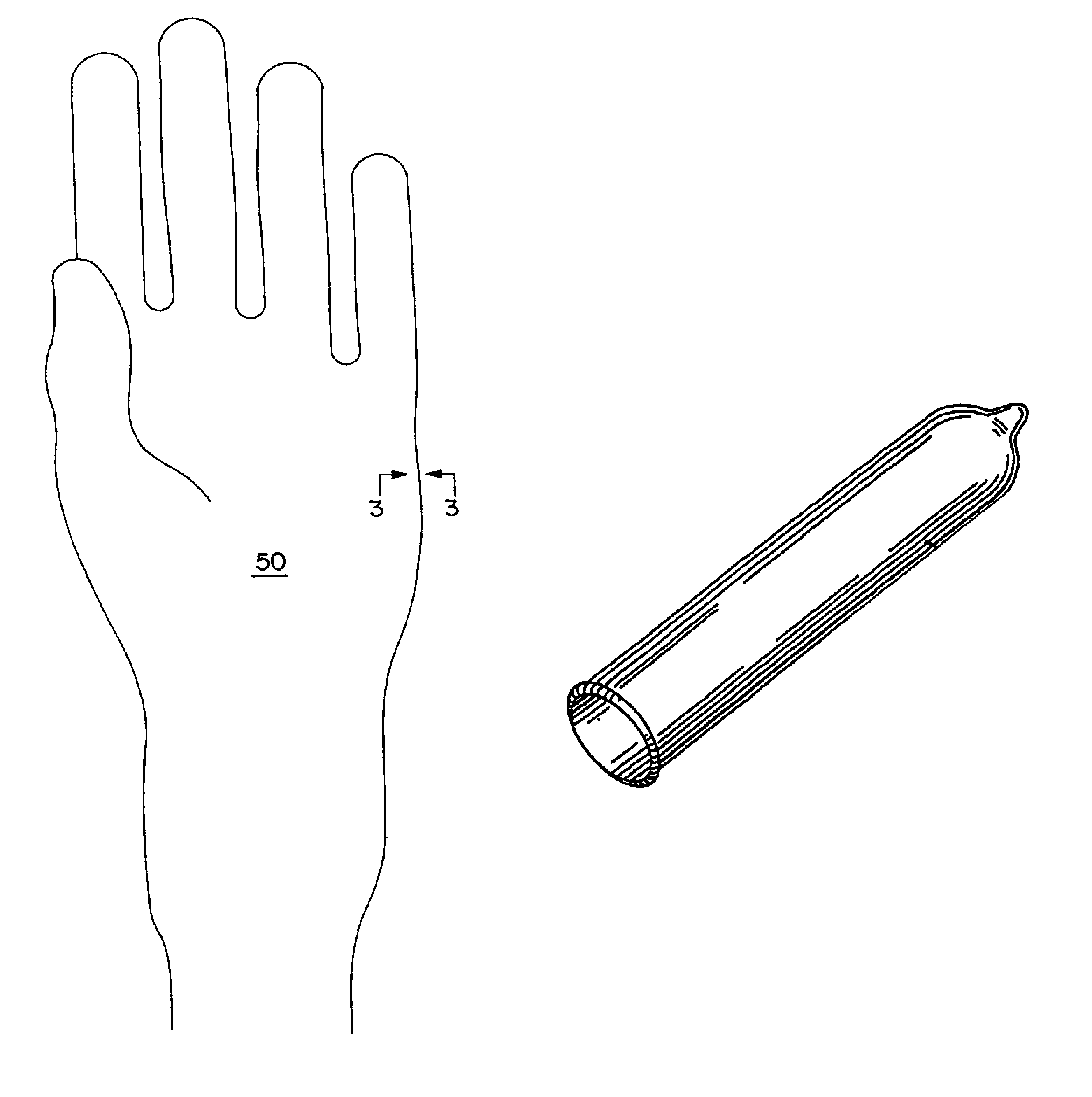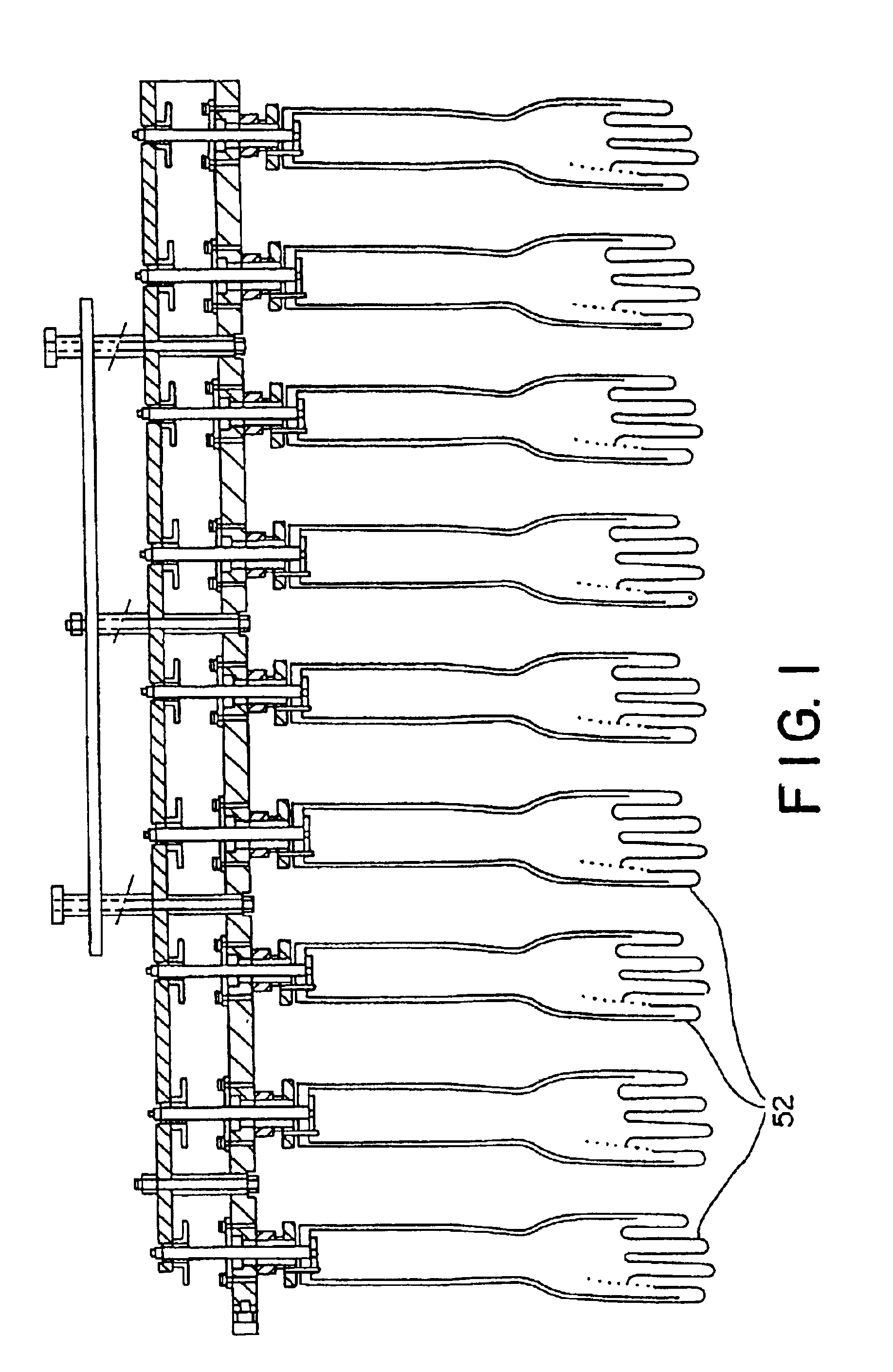Crosslinking agent for coated elastomeric articles
a technology of elastomeric articles and crosslinking agents, which is applied in the direction of coatings, gloves, garments, etc., can solve the problems of elastomeric articles that are typically tacky to the touch, present a somewhat sticky surface, and make the manufacture and use of articles difficult, and elastomeric articles that feel sticky to human skin
- Summary
- Abstract
- Description
- Claims
- Application Information
AI Technical Summary
Problems solved by technology
Method used
Image
Examples
example 1
[0061]A dispersion was prepared by mixing 250 g hot tap water and 5 g Methocel A4M (a methyl cellulose polymer available from the Dow Chemical Company). The solution was allowed to cool, with mixing, such that the Methocel dissolved.
[0062]2.1 g of 100% Kymene 557LX (a PAE crosslinking agent available from the Hercules corporation) was added to 100 g of the Methocel solution. The pH of this solution was adjusted to 9.0 with a potassium hydroxide solution.
[0063]A film of the solution was cast and dried / cured at 120° C. for 2 hours.
[0064]The resulting film would not dissolve in either hot or cold water. The insoluble film was measured to contain up to 97.4% water.
[0065]For comparison purposes, a similar mixture was prepared as above, however no PAE crosslinking agent was included in the mixture. The resulting film dissolved when contacted with water.
example 2
[0066]100 g of a polymer solution was prepared including 90 g of water and 10 g of polyacrylic acid, sodium salt (available from Polymer Science, Catalogue Number 06567). 100% Kymene 557LX was then added to the solution and pH was adjusted in order to produce films, as follows:
[0067]
PolymerKymene 557LXFilm NumberSolution (g)(g)pH12029.522019.53200.59.542009.55200about 7.3(No adjustment)
[0068]Films 1-5 were then cast and dried / cured under a heat gun for approximately 10 minutes. Films 1, 2, and 3 did not dissolve when contacted with water. Films 4 and 5 did dissolve when contacted with water.
[0069]As may be seen, a cationic crosslinking agent, such as a PAE crosslinking agent, may be used to crosslink a polymeric film to produce a hydrophilic, insoluble film which may be applied as a donning layer on an elastomeric article, such as a glove.
PUM
| Property | Measurement | Unit |
|---|---|---|
| Acidity | aaaaa | aaaaa |
| Acidity | aaaaa | aaaaa |
| Elastomeric | aaaaa | aaaaa |
Abstract
Description
Claims
Application Information
 Login to View More
Login to View More - R&D
- Intellectual Property
- Life Sciences
- Materials
- Tech Scout
- Unparalleled Data Quality
- Higher Quality Content
- 60% Fewer Hallucinations
Browse by: Latest US Patents, China's latest patents, Technical Efficacy Thesaurus, Application Domain, Technology Topic, Popular Technical Reports.
© 2025 PatSnap. All rights reserved.Legal|Privacy policy|Modern Slavery Act Transparency Statement|Sitemap|About US| Contact US: help@patsnap.com



